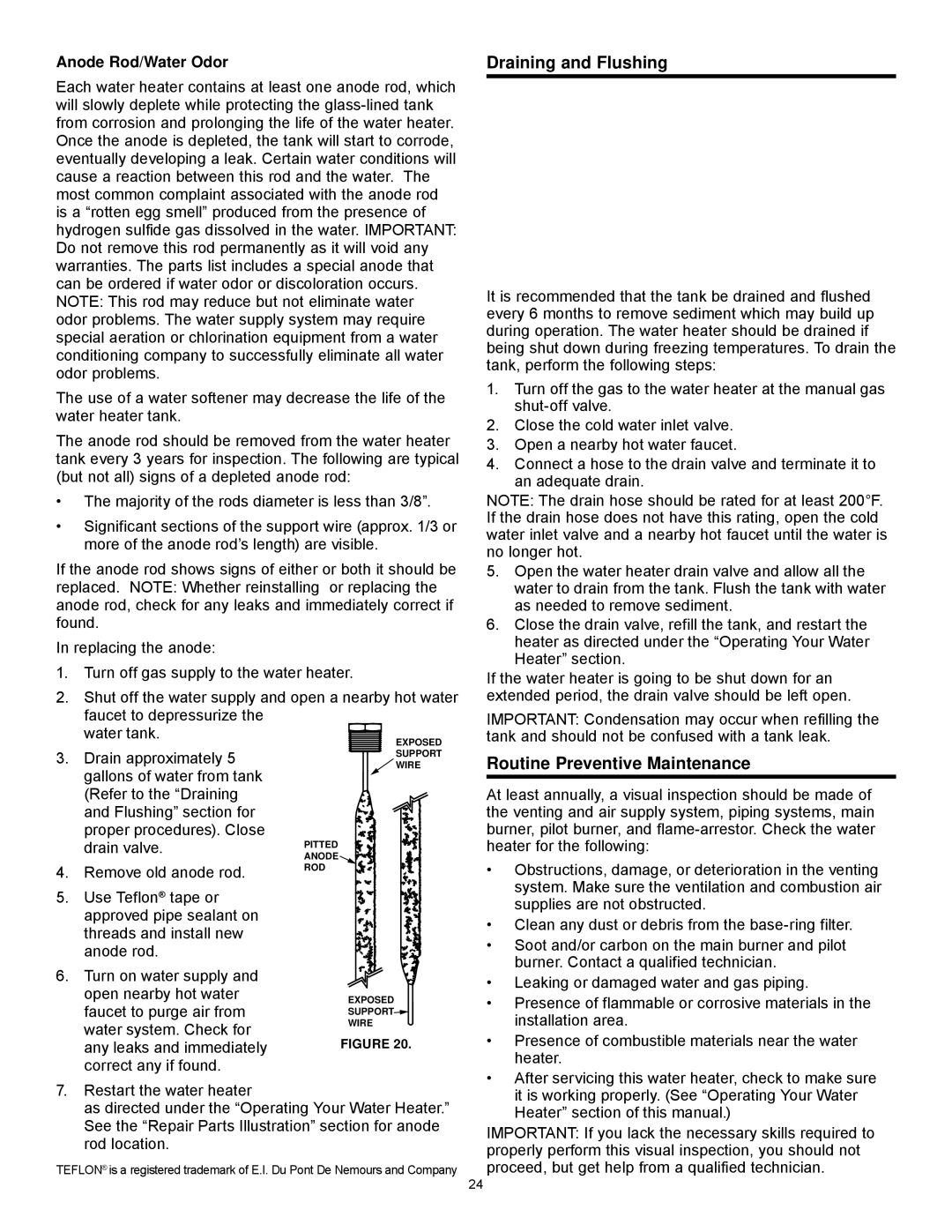GS6 50 YOCT Series 200, GS6 30 YBRS Series 200, 186489-002, GS6 50 YOCT Series 201, GS6 40 YBRS Series 200 specifications
State Industries has a long-standing reputation for manufacturing high-quality heating equipment, and their GS6 series continues this tradition with advanced technology and robust features. The GS6 40 YOCT Series 201, GS6 50 YBRT Series 200, GS6 40 YBRT Series 201, GS6 50 YBRS Series 201, and GS6 30 YOCT Series 200 are notable additions to their product lineup, each designed to meet varying heating demands and efficiency standards.The GS6 40 YOCT Series 201 is engineered for residential applications where space and efficiency are paramount. It incorporates advanced condensing technology, allowing it to achieve high energy efficiency ratings while minimizing emissions. This model features a durable heat exchanger that enhances performance and longevity, making it an ideal choice for homeowners looking to reduce energy costs.
In contrast, the GS6 50 YBRT Series 200 is tailored for commercial settings, offering a robust heating solution with a larger capacity. This series emphasizes reliability and ease of maintenance, featuring a user-friendly control panel and diagnostic capabilities that streamline troubleshooting. It is equipped with high-quality insulation, which helps to retain heat and reduce operational costs.
The GS6 40 YBRT Series 201 is another commercial option that combines efficient heating with cutting-edge design. It utilizes an advanced modulation system to adjust output based on real-time demand, ensuring optimal energy consumption. This model's innovative design also includes rust-resistant materials, making it suitable for diverse environments.
For operators seeking versatility, the GS6 50 YBRS Series 201 provides a high-efficiency solution that can be used in various applications. With its quiet operation and compact footprint, it seamlessly blends into existing systems without disruption. Moreover, its integration with smart home technology allows for remote monitoring and control, enhancing convenience for users.
Lastly, the GS6 30 YOCT Series 200 stands out due to its compact design and remarkable efficiency in smaller spaces. This series is particularly suited for tight installations, while its innovative combustion system ensures reduced emissions and improved performance. Users can take advantage of its low noise levels, making it ideal for residential settings where comfort is crucial.
Overall, the State Industries GS6 series, with its range of models and features, is a testament to innovative engineering. Each unit is designed to offer optimal performance, efficiency, and reliability, catering to both residential and commercial heating needs. With advanced technologies and user-friendly features, these models provide an excellent solution for modern heating requirements.

